Photo: Rich Fury/Getty Images

Alejandro Fernández performs at the 20th Latin GRAMMY Awards in 2019
news
Alejandro Fernández Announces 2020 'Hecho En México' World Tour
The 28-date trek, which takes the revered ranchera singer across North America and Europe, is named after his forthcoming 2020 album
Mexican rancheras star and Latin pop singer Alejandro Fernández has announced dates for his Hecho En México World Tour. The 28-date trek, which kicks off this May and runs through December, will take the revered singer across North America and Europe and will include his debut shows in Toronto, Canada, London and Paris.
The newly added global tour dates are an extension of the initial leg of the Hecho En México trek, which he announced last November and runs across his native Mexico for multiple dates starting this month.
The tour is named after his forthcoming album, Hecho En México, Spanish for "Made In Mexico," which releases this Friday (Feb. 14). The album, which features collaborations with Christian Nodal, Luis Carlos Monroy, Jorge Massias and Chico Elizalde with production by Áureo Baqueiro, sees Fernández returning to his mariachi and ranchera roots.
<style>.embed-container { position: relative; padding-bottom: 56.25%; height: 0; overflow: hidden; max-width: 100%; } .embed-container iframe, .embed-container object, .embed-container embed { position: absolute; top: 0; left: 0; width: 100%; height: 100%; }</style><div class='embed-container'><iframe src='https://www.youtube.com/embed//-mkLl9H8JTs' frameborder='0' allowfullscreen></iframe></div>
Alejandro Fernández is considered ranchera royalty. He is the son of ranchera icon Vicente Fernández, the latter of whom is widely known as El Rey De La Música Ranchera, or The King Of Ranchera Music, for his dominance in the traditional Mexican music genre. Alejandro is also the father of Alex Fernández, a rising ranchera singer.
Last November, the Fernández clan stole the show at the 20th Latin GRAMMYs when the three of them performed live onstage together for the first time ever, delivering a moving performance spanning three generations of ranchera music and culture.
Read: Alejandro Fernández Revealed
In 1997, Alejandro Fernández released his sixth album, Me Estoy Enamorando (I'm Falling In Love), which marked his departure from ranchera music and expansion into the wider Latin pop canon. The platinum-selling album topped the Latin Pop Albums and Top Latin Albums charts in the U.S. and received a GRAMMY nomination for Best Latin Pop Performance. Fernández received his most recent GRAMMY nomination, for Best Mexican-American Performance, for his 1999 album, Mi Verdad. He has also won two Latin GRAMMY Awards.
Tickets for Fernández's 2020 Hecho En México World Tour go on sale Friday, Feb. 14, at 9 a.m. local time. For more information and for the full tour routing, visit his official website.
Bad Bunny, Rosalia, Juanes & More: 5 Unforgettable Moments From The 2019 Latin GRAMMYs
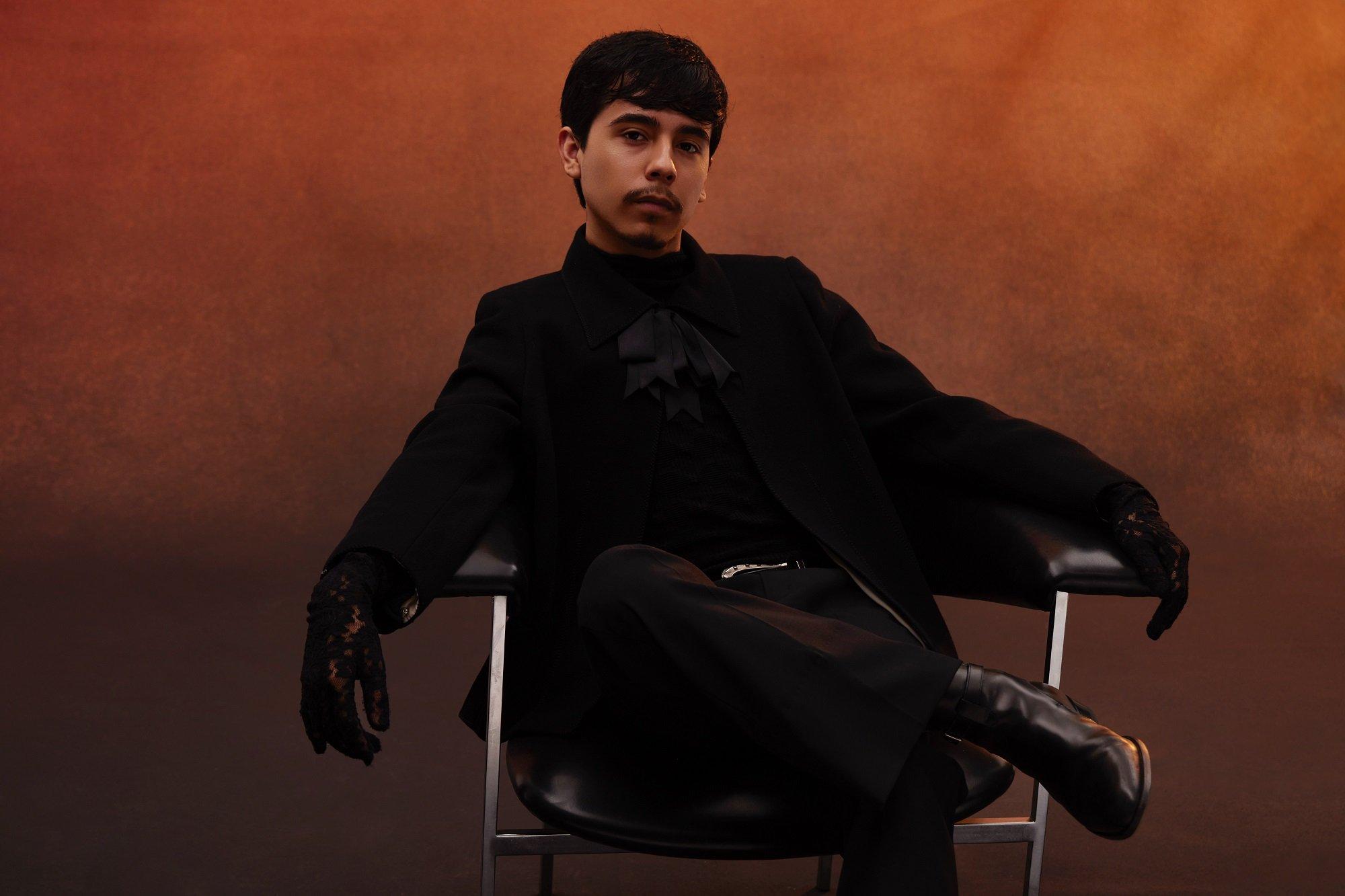
Photo: Le3ay Studio
interview
On 'Mirada,' Ivan Cornejo Redefines The Sound Of Sad Sierreño And Helps Fans Heal Through Music
Ivan Cornejo has always found solace in music. With his new LP, 'Mirada,' he wants his fans to experience that sense of belonging: "I write about emotions that everyone goes through or has been through."
Within the landscape of Música Mexicana, Ivan Cornejo is a rarity.
The 20-year-old California native stands out as one of the most intriguing acts in a genre represented by artists known for their flashy looks and music. Soft-spoken and warm, Cornejo's gentle demeanor effortlessly translates into his music and on-stage persona and musical productions.
Cornejo's songs and lyrics are far removed from the "corridos tumbados" that have taken over global charts. Fans have dubbed the Mexican American singer the "Gen Z therapist" because of his heartbreak-influenced lyrics and dexterity in creating the ethereal, melancholic sound known as sad sierreño.
With two albums under his belt, Cornejo makes his major label debut with Mirada, released on July 18 via Zaragoza Records / Interscope. The album features the wistful, sad sierreño sound that made Cornejo famous three years ago with "Está Dañada," a heart-wrenching ballad from his first LP, Alma Vacía (2021).
In the single, which has amassed over 270 million streams on Spotify, Ivan — then 17 — captivated listeners with powerful melodies accompanied by languid and nostalgic vocals, reciting verses filled with maturity beyond his years.
In Mirada, the Música Mexicana breakout star presents 12 solo songs inspired by summer nights, including singles "Aquí te Espero," "Donde Estás," "Baby Please," and "Intercambio Injusto." As with his previous productions, Cornejo makes heartbreak the central theme of his album while guitars and melodies reminiscent of alternative rock take center stage.
While the album doesn’t feature additional artists, Cornejo opened up to collaboration within the studio. The singer, used to collaborating solely with his producer, Frank Rio, encountered a challenge when bringing two additional creatives into the studio.
"The process for this new project was very different," Cornejo tells GRAMMY.com in a Zoom interview from Mexico City. "[Having other] creatives in the studio [resulted] a lot of learning. For example, my producer and I learned a lot from each other; we had constructive disagreements. We heard each other's opinions and learned a lot from this project."
The rising sad sierreño star discusses with GRAMMY.com the creative challenge of Mirada, the artistic boundaries he pushed along the way, the advantage behind bilingual songwriting, and the unexpected singer that influenced his lyrics.
This interview has been edited for length and clarity.
'Mirada' feels very personal, almost like a diary. How would you describe the album's overall theme and feeling?
While writing and recording this album, I wanted it to feel very personal, intimate, and gentle but with a little more uplifting sound.
I wanted the Mirada theme to feel like a nostalgic summer night. I want people to feel like they can play these songs on the beach, with friends, or alone in bed. I wanted it to feel a little euphoric.
The record showcases a blend of Latin and Anglo influences. Tracks like "Baby Please," "Dónde Estás," and "Aquí te espero" have a rock ballad feel. What inspired this fusion?
My influences come through a lot. I remember listening to my sister's and brother's music at eight while my parents would play classical regional Mexican music, like mariachi and corridos. As I grew up and started making music, it meshed into this sad sierreño and this funky Spanish alternative [genre].
The guitar is a staple in your sound. How did it become so central to your musical expression?
I started playing the guitar when I was about seven. I fell completely in love with the instrument. My mom tried to put me in violin classes, and I learned the instrument for a while, but the guitar kept winning me over. I kept learning more and more about the guitar, and around 12, I started learning songs by Radiohead, Arctic Monkeys and Tame Impala, and that's where my music emerged.
Mirada portrays the nostalgia around summer nights. How were those nights for you?
I spent it with my friends, making a bonfire and hanging out at the beach, pool, or jacuzzi.
Those nights when you just put your phone away and let the wind hit you and talk about your feelings, your thoughts are different, that kind of night.
What kind of music did you listen to on those summer nights?
Last summer, I listened to [Bad Bunny’s] Un Verano Sin Ti; [that album] was No. 1 on my playlist.
The year before, I listened to just any vibey music, like Arctic Monkeys, Tame Impala, or Radiohead, when I was alone. Cigarettes After Sex, I listened to them a lot during the summer when I was going to sleep. I always put them on.
You say that each track on this album is pushing the boundaries of your art. In what aspect are you breaking those barriers?
I go back to my last two albums [Alma Vacía and 2022’s Dañado,] and I want to grow as an artist and musician every time I listen to them.
Every time we enter the studio, [my producer] Frank Rio and I try our best to push the limits for ourselves and keep growing as artists. Vocally, musically, instrumentally, [we're] trying our best to make things sound even better.
How do you achieve that? Do you take vocal references from singers you like? Instrumentally, how do you break patterns within the genre?
Sometimes, when I feel something is missing from a song or I want to do something but don't know how to listen to a bunch of music that I think [is similar].
For example, each song on Mirada has a very different style. Depending on the style of the song, I’d listen to genres, styles, or certain ways that artists sing that match that song. Listening to those songs gives me ideas; it's like combining those ideas.
Vocally, for example, if I don't know how to sing a specific word or note, I listen to references and try to combine them in the best way possible.
Your lyrics show maturity beyond your years. Do you consider yourself an old soul?
Yes, I'm an old soul, for sure. When I was 7 years old, my brother would play Johnny Cash songs, and I was right behind him listening to them, downloading all the songs. I remember that for a while, I would go to sleep listening to Johnny Cash for an entire year.
Read more: Meet The Gen Z Women Claiming Space In The Regional Mexican Music Movement
Your song often references therapy sessions, and your fans even consider you the therapist of an entire generation. Do you feel that way?
I never realized my music had that effect. I would read comments saying, "Oh, he healed me" or, "I feel better now," or "he's my therapist, he's my comfort artist." That gave me a lot of joy because my music touched my fans in a very emotional way.
[Those comments] gave me the great idea of naming my [last] tour "Terapia." [Going to a concert] It's like you go to a therapist and you hear them. It all made sense. I hope my music is therapy for a lot of people.
Have you ever been to therapy yourself?
No, I have not. But... I should go. [Laughs.]
How do you articulate emotions clearly in your songs, especially without formal therapy experience?
I write about emotions that everyone goes through or has been through. And I try to write it in a way that sounds fresh and new. Also, melodies are very important because you can say something; depending on the melody, it can change your feelings. I try my best to make it hit the heart melodically and lyrically.
What about Spanish led you to express heartbreak in this language?
I was very inspired by Mexican music because there's something about the sound and the language that is very romantic. For example, there are some phrases in English that you might translate to Spanish, and they sound better in Spanish. Since my first language is English, I can translate them into Spanish and make them sound better and more emotional.
I try to write [songs first] in Spanish, but from time to time, when I get stuck, I start thinking in English. I try to think of just lyrics, and I'm like, okay, that's a cool lyric; how do I make it fit into this? And then, if it doesn't work, I'll try another one and another one until something works, or I get an idea in English, and it just works in Spanish.
[Being bilingual] gives you two perspectives, which helps a lot in the writing process.
What does it mean to you to represent Mexican American culture through your music?
It feels like you're put on a pedestal and have to be a role model. Being part of two cultures is a blessing, because you have two sides and perspectives. I'm very lucky to be here in Mexico and to learn about Mexican culture while still being from the United States and learning from American culture.
Did you feel you fit in when you were growing up?
No. At first, no. I was very shy.
Did music give you that sense of belonging?
Yeah, for sure. It gave me relief as I fit somewhere, and my voice was being heard. [It makes me feel] like I have support and people are [rooting for] me, and it helps me feel a bit understood.
As you enter your twenties and deal with growing fame, do you feel pressure being labeled as the voice of a generation?
I feel the pressure of being a role model, but it's a good kind of pressure. It helps me to make sure that I'm always giving my all. It's almost like motivation; I have to keep trying my best every time to be a role model.
It helps me to ensure that I'm always giving 100 percent and that it's like motivation, too. I have to keep trying my best each time to be a role model.
You sold out the mythical Houston Rodeo in April. How did singing to a crowd of 72,000 make you feel?
[Selena] and Johnny Cash are many of my favorite artists and artists that I look up to [have performed there]. It was a complete honor to play the Houston Rodeo and one of the scariest things I've ever done. [Laughs.]
It was scary at first. But when I realized that there were a good number of fans, I took out my in-ears, and I heard nearly the whole stadium singing back to me. It was such a beautiful and unforgettable night for me. It was a crazy experience.
The Latest News About Latin Music
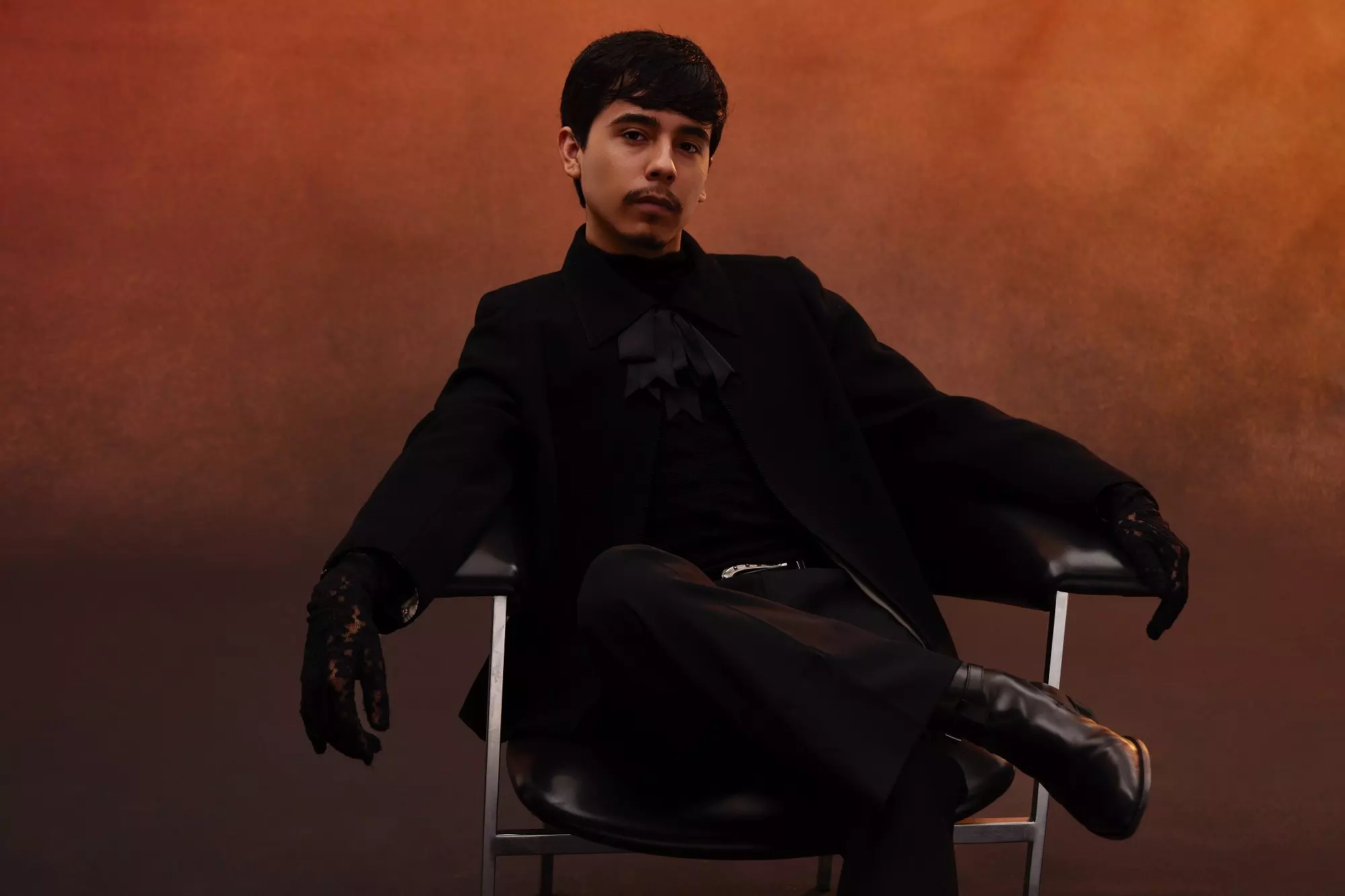
On 'Mirada,' Ivan Cornejo Redefines The Sound Of Sad Sierreño And Helps Fans Heal Through Music
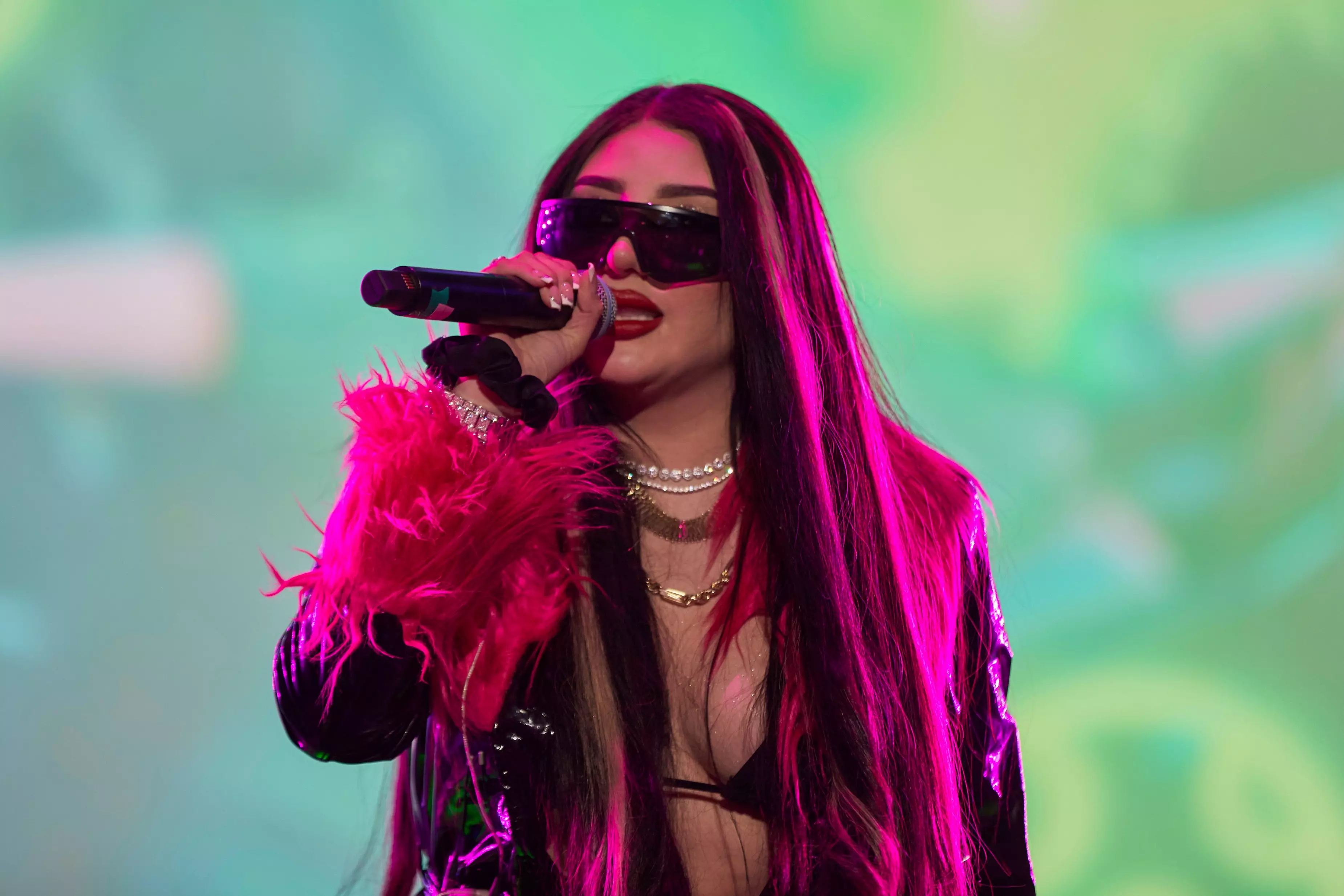
7 Artists Bringing Reggaeton Mexa To The World: El Malilla, Bellakath & More

Revisiting 'Re': How Café Tacvba’s 1994 Masterpiece Changed Mexican Music Forever
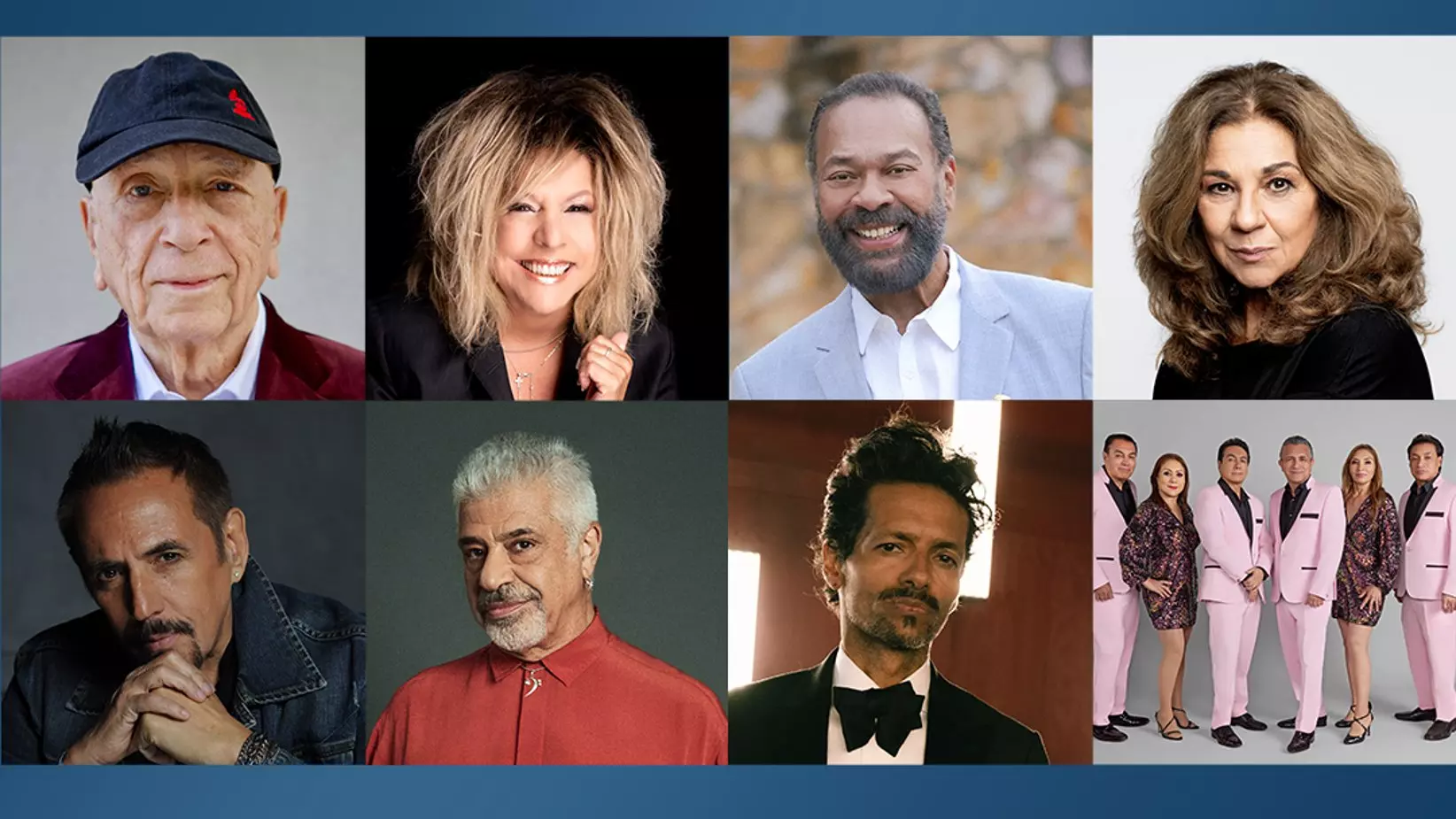
The Latin Recording Academy Announces 2024 Special Awards Recipients: Los Ángeles Azules, Draco Rosa, Albita, Lolita Flores & More

Nelly Furtado On How Remix Culture, ADHD & Gen Z Inspired Her New Album '7'

Photo: Shervin Lainez
interview
Angélica Garcia's Intuition: How 'Gemelo' Was Born By Embracing L.A., Ancestry & Spanish Language
When creating her new album, 'Gemelo,' Angélica Garcia relied on her "spirit self" for guidance. The Los Angeles native details how she arrived at her first Spanish-language release by following her intuition and embracing her family history.
Early in the spring of 2020, Angélica Garcia felt like she was being called back home. The singer/songwriter had spent the last three years in Richmond, Virginia, but her roots were firmly planted in California.
She’d spent most of her life in El Monte — the city in the San Gabriel Valley just 20 20 minutes east of downtown L.A., where she was raised by her parents and grandparents. (Her mother, also named Angélica, was a singer who had grown up performing rancheras with her siblings at rodeos around L.A. and Mexico.) Angélica spent most of her childhood moving around the city, learning how to fit in each time she enrolled in a new school. At 17, she followed her parents across the country to Accomac, Virginia — a tiny rural town on the state’s eastern shore.
"It was challenging, but I tried to always see the positive side of those experiences," she tells GRAMMY.com. "In some ways it was like traveling back in time to live there, but I also just thought, Wow, this is a whole different culture that I get to be a part of."
After high school, she moved to Richmond and fell into the city’s indie scene, performing in several bands while recording and releasing her own solo music. Her semi-autobiographical track "Jícama" made it onto President Obama's 2019 year-end music list, giving her a boost of recognition just before she released her 2020 album, Cha Cha Palace. The album was a celebration of her Salvadoran-Mexican heritage, bursting at the seams with influences from across the Latin American diaspora, merging cumbia, ranchera, and reggaeton with psychedelic rock and pop.
Just before the pandemic, Garcia felt as if she "was being called to start over in L.A." With COVID-forced closures throughout the city, it wasn’t quite the return Garcia had hoped for. It did, however, present an opportunity for grounding and reconnection — not just with Garcia's hometown, but with roots, culture, and voice.
She turned inward, dredging up gnarled, complicated feelings about her identity. She’d started to find success writing music that she felt deeply connected to, but Garcia was also grappling with the realization that it was written in a language neither of her grandparents spoke. She turned to poetry, trying to work through her feelings of grief and disconnect.
Slowly but surely, those words became the first inklings of Gemelo. Produced by Chicano Batman’s Carlos Arévalo, the 10-track album explores duality and belonging, following Garcia’s journey of acceptance from the ethereal musing of opener "Reflexiones," to the wild joy of closer "Paloma."
Her first album sung almost entirely in Spanish, Gemelo is Garcia triumphing over her doubts, following her intuition into an otherworldly pop soundscape that transcends borders.
Ahead of her upcoming tour dates opening for IDLES, Garcia spoke with GRAMMY.com about processing grief, writing in Spanish, and finding inspiration in her ancestors.
This conversation has been condensed and edited.
What inspired your move back to California?
I loved living in Richmond, but I was having a really hard time towards the end. Moving kind of felt like something that I had to do. That was one of the difficult things that I was navigating around the time of writing Gemelo.
The album touches on the concept of grief and loss, but also discovery. What was going on in your life as you were writing it?
The record feels like traveling through grief. In real life, I was processing some really difficult changes and adapting as a person. I felt like there was a version of me who was going through the motions and phasing in and out of grief. My body was there, but my mind was somewhere else. I felt like I was almost in a dissociative state.
How does that sense of self you were grappling with tie into the album’s title, Gemelo?
It’s funny, it almost feels like the album revealed itself to me over time. I was maybe three or four songs in before I really started to see a through line between them. I wasn’t sure they were going to turn into an album, but they started to feel like part of a body of work.
In the beginning, I think I kept noticing these themes of reflection, the idea of past lives, all these emotions that kept coming up. Later, I was searching and searching for a record title, and I kept seeing the word "twin." I hadn’t actually tried translating it into Spanish, but when I did, it was like a light bulb went off. I heard "gemelo," and everything made sense.
What about the concept of twins were you drawn to?
I often felt like I had this intuition guiding me and helping me through some of these decisions, and helping to protect me. That, to me, is my gemelo. We have the version of ourselves that exists in the physical world, and then we have an intuitive self, a spirit self, that’s guiding us, even when our tangible self is too confused to really understand everything.
Most of this album is in Spanish. What’s your relationship to the language? Did you grow up speaking it?
It’s always been a very core part of my childhood and my formative memories. Most of the people that I love speak Spanish. So even if I wasn’t always exercising it every day, anytime I spoke to the core people in my life — my grandparents, my mom, or my dad — I was always hearing Spanish. It’s also some of the first music that I learned how to sing, so it felt very natural to me to have it in my mouth and on my tongue.
I just realized I’d never actually tried to express myself as a writer, creatively, in this language. I really wanted to honor that side of myself and my family lineage, and give it a shot.
Would you say you express yourself differently in Spanish than in English?
I feel like maybe it was almost easier to write in Spanish. I’ve been a musician for so long that it can be really easy to be like, "Oh, this is how a song should go," or "I should have a chorus that sounds like this." In some ways, because I didn't have the same framework or rules with Spanish, I was leaning a lot on imagery and on concepts in a way that was a very fun and refreshing challenge.
I think it brought out a little bit more of my philosophical side, because I didn't feel the same pressures that sometimes I feel when working on music in English.
Did exploring that side of yourself also help you connect on a different level with your family and your roots?
I always felt a deep connection to my roots. It can be so easy to just get caught up in everyday life, so it's really fascinating when you look back, and you see the similarities between you. It really makes you wonder how much of it is nature and how much of it is nurture? And how many of these things I do were literally inherited, you know?
How did that seep into your writing for this album?
It’s funny, before I moved back to California, a really good friend of mine in Richmond got really into looking up their ancestry. We would just dedicate time to researching our family histories, and things like that. It was nice to do it with a friend, because you had somebody to talk to about it.
As I was learning, I was writing down the names of my relatives and putting them in a specific area in my room where I would meditate a lot. I would journal with the candles lit, and one day, I was sitting in front of that area and the song "Juanita" just poured out of me. The name came out so clearly.
Some songs you labor over for months, or even years, and they might not come out. This one just poured out like it was raining from the sky. Later, I was sitting around a coffee table with my mom and my grandma, and she was like, "Oh, yeah, your great great grandma, Mama Juana. Juanita …" and I was just thinking, Wait, what? My grandma was telling me how Juana was this mystical woman, and I thought, Wow, she really wanted a song.
In addition to "Juanita," your songs really tap into the stories of strong women, feminine joy, and feminine anger. How have the women in your family influenced your music?
I love the perspective of the women in my family because there’s so much personality and resilience. They’re badass. My grandmother would tell me stories about being a little girl in El Salvador selling coffee, and her whole journey to work at the U.S. embassy, which is eventually how she got to the U.S. And my mother, being a child performing rodeos, told me stories about walking from one gig to another in Mexico with my grandpa because the van had broken down.
Sometimes I feel like people like to focus on their material accomplishments, like money or degrees. But the story of my mom walking from a gig as a child in her rodeo outfit, or the fact that my grandmother went from selling coffee in the jungle in El Salvador to L.A.? That's an accomplishment. That's resilience.
They’re full of these vibrant stories, because they had to navigate through so many trials. Because of them, I experienced a lot of love and magic, care, and nurturing. It’s unfortunate to me that those traits are sometimes seen as soft instead of strong, when it’s both. They redefined strength for me.
Gemelo’s final track, "Paloma," feels like such a triumphant celebration. What significance does that song have for you?
I wanted to end with gratitude. "Paloma" is a song about seeing the divine reflected in each other, in the people you love, and how, even when we're extremely critical of ourselves, we all hold the divine within us. We’re all walking this earth with the power to do incredible things. That outlook has really gotten me through so much in life. It can be so easy to get lost in the grief, but the light is what cuts through all of it for me.
The Marías Plunge Into The Depths On 'Submarine': How The Band Found Courage In Collective Pain
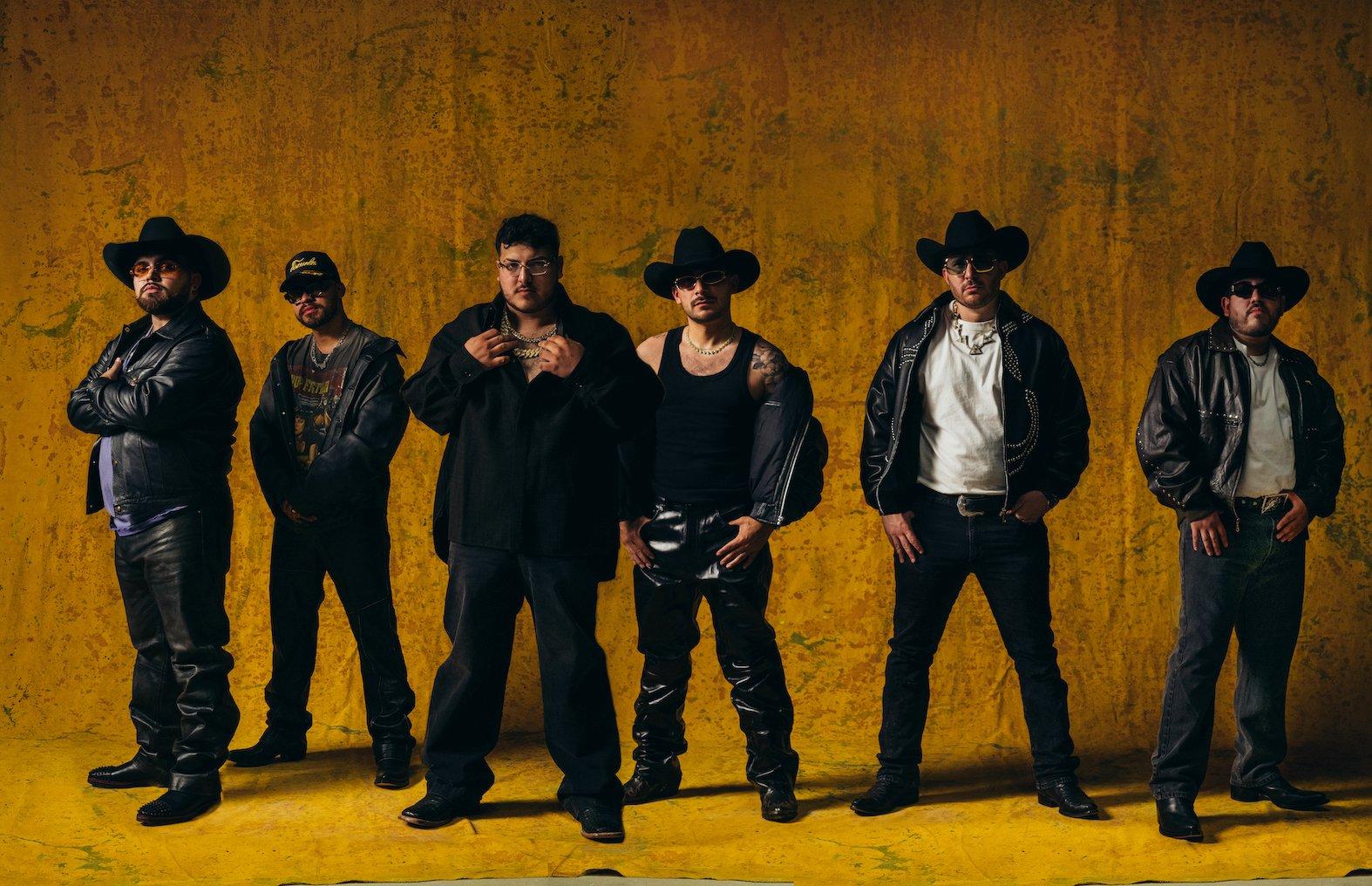
Photo: Eric Rojas
interview
Grupo Frontera On 'Jugando A Que No Pasa Nada' & Fully Expressing Themselves: "This Album Was Made From The Heart"
With their second album, regional Mexican music stars Grupo Frontera aim to honor their roots while showing their wide-spanning musical interests. Hear from some of the group on the creation of the album and why it's so special to them.
In just two years, Grupo Frontera have gone from playing weddings in their native Texas to joining Bad Bunny on stage at Coachella and performing on "The Tonight Show Starring Jimmy Fallon." No matter how rapid their rise to fame has become, the Texas sextet has held the same ethos: celebrating their Mexican heritage while embracing the American culture they were born into.
Embracing that balance has helped them transcend cultural barriers with their modern take on regional Mexican music, which incorporates a wide range of musical styles. That holds true on Grupo Frontera's second album, Jugando A Que No Pasa Nada, out now.
With bright accordion lines and a high-energy blend of urbano party anthems, cumbia-inspired ballads, and forays into pop, the album is a masterful display of the group's mixed cultural background. It retains the same Latin cowboy spirit of their first LP, 2023's El Comienzo — which had roots in the norteño genre, a traditional style originated in Northern Mexico — while tapping into the music they grew up listening to in the States, like hip-hop, corridos tumbados, and country music.
While El Comienzo introduced Grupo Frontera as loyal traditionalists, Jugando A Que No Pasa Nada aims at speaking to younger generations. It's a fitting approach for the group, whose ages range from early twenties to early thirties across its six members — Alberto "Beto" Acosta, Juan Javier Cantú, Carlos Guerrero, Julian Peña Jr., Adelaido "Payo" Solis III, and Carlos Zamora — that also speaks to their evolution amid their whirlwind success. It's proof that they aren't afraid to create music that is completely true to them — and that's exactly what makes Jugando A Que No Pasa Nada special.
Below, Cantu, Guerrero, Peña, and Solis speak with GRAMMY.com about their cultural roots in South Texas and the making of Jugando A Que No Pasa Nada.
The last two years were a very prolific time for Grupo Frontera. What was it like to create Jugando A Que No Pasa Nada after everything that's happened to the group?
Adelaido "Payo" Solis: Last year we were working a lot, playing four or five concerts a week, and that didn't give us time to structure El Comienzo as well as we wanted to. Now we made time to record all these different types of songs. It was amazing to have time to work on the album cover and all the songs the way we wanted to, and have everything set in a certain way to represent the new album to its highest potential.
Between 2023 and this year, were you able to take any time off to work on this new record, or was it done in between touring?
Juan Javier Cantú: There were times when we were touring El Comienzo that we would record before the people got inside the theater. We would record onstage. We'd be like "Wait, don't let the people in — 20 more minutes, we have to finish this session!" That happened with our new songs "Quédate Bebé" and "Nunca La Olvidé."
Solis: It's a little bit of both because those were recorded live, but then two months ago, we locked ourselves in the house for a good four or five days, and out of that came, like, 15 more songs.
You mentioned that, for this new record, you had more time to work on the order of the songs. What's the general feeling behind this track list? Starting with "F—ing Amor."
Solis: The general feel of this album is literally the album's name, Jugando A Que No Pasa Nada [which loosely translates to "pretending everything is OK"]. Since we had more time to think about it, we tied many things to that name, to that phrase.
Everyone, at some point, has pretended everything is OK when in reality, it's not. You can see it in the album cover — the truck is on fire, but our character, who represents Grupo Frontera, is sitting in the car as if nothing is wrong. So the idea — and I know everyone experienced this — is that when you get in your truck, you can play our record and you can drop the act. You can stop pretending everything is alright. You can get in your feelings.
So the way it's structured, starting with "F—king Amor," is that you don't want to know anything about love, then in the middle, you have "Ya Pedo Quién Sabe," which says "maybe I miss you," and then by the end, "Quédate Bebe" [which translates to "Stay Baby"]. So it is a ride, an experience, which starts with you being hurt, or left behind by someone, and you being sad about it, then slowly wondering how is she doing, then saying "I miss you," and finally "stay with me."
Cantú: More than anything, we are playing with genres. In this record, you have our traditional cumbias, country music, and then songs like "Desquite." So that was also the goal, for people to know more about our music and the music we like.
Solis: Each member of Grupo Frontera listens and plays different styles, so starting from that, we each had a big say in the genres we wanted to play and styles we wanted to record on this album.
More than anything, we were thinking of new generations. The Latinos of newer generations that don't speak Spanish, or don't get to come back often to Mexico or the countries where their parents are from. They don't want to hear just cumbia, so in our album, we want to make all these styles for them to find, in our songs, the genres that they like.
You mentioned that each of you has different styles and genres you brought to the new record. How did you work in the studio to generate these new sounds?
Solis: Grupo Frontera doesn't really use a lot of computer sounds, most of the music we play is through our instruments. We used to work on our songs starting from guitar and voice only, but now because we had more time to work on things, we each took a song and would listen to it for days. Then we'd meet again as a group and work on it in the studio: everyone's opinion counts, and no one's opinion takes precedence over the other. That's how, slowly, each new song took shape.
When you talked about the moment in which you get in your car or truck, and finally get to stop pretending everything is alright — does that car culture come from your upbringing in Texas?
Julián Peña: That culture is definitely from where we are from, from the Valley [the Lower Rio Grande Valley, which spans the border of Texas and Mexico], where there are a lot of troquitas tumbadas [lowered or customized pickup trucks]. You'd hear la Raza zooming by, blasting our songs, with the bass booming, from their trucks. So it's kind of like a relief, your safe space.
Like the album's title says, "pretending everything is fine"... you're pretending to be fine and then once you get in your car and you pass yourself the aux, you turn that up and you start bawling, or feeling whatever you're feeling. Then the album's over, gotta get back to work, clock back in, and go back to pretending everything's fine. It's like an escape that we know many people have, it has happened to all of us; you go on a drive to decompress, turn the music up, let it all out, and feel better. That's what we wanted to capture with that image.
What songs did you each play when you needed that kind of moment?
Cantú: When I broke up with a girlfriend, around 2012, my go-to was Drake.
Peña: Mine was "Then," by Brad Paisley. I was just sad and going through a country phase. [Laughs.]
Solis: I would listen a lot to a song by Eslabón Armado called "Atrapado."
Cantú: When I feel a little trapped by this street lifestyle I go, "I Should've Been A Cowboy"! [All laugh.]
I read some of you grew up raising cattle, or come from families of farmers and ranchers. What aspects of that lifestyle do you miss, in contrast with being in a city like LA, and actively involved in the music industry?
Solis: Juan had his ranch around General Bravo [a municipality in Mexico], and I was born in the States, but I would go every weekend to Mexico, to my parent's ranch, where they had cattle. I know Juan can relate to this — when you are at the ranch and play a song, and can sing out loud without anyone around listening or judging you, that's a really nice feeling. When you are on stage, in the industry, you're not singing only to yourself, but to make the audience's day better. So no matter what you're going through, when you're on stage, your job is to make people happy.
Cantú: Going to a place — like a ranch, an open space — to disconnect, it's like a reset. I feel a lot of people have not experienced that, they don't know the power that has.
Through your lyrics, you adapted old love songs and romance to modern times. Some songs even mention emojis, DMs and texting. Do you have any favorite emojis?
Solis: Oh man, I love the black heart emoji because it can mean many things. A dead heart, or that you're not feeling anything. It can mean your heart is broken and needs mending to go back to being red. I think it's super cool.
Carlos Guerrero: I like the thinking face emoji.
Cantú: Sometimes he uses it out of context and we don't know if he's thinking, or he's mad. [Laughs.] For me, the one I use the most is the "thanks" [praying hands emoji].
Peña: I like the heart hands emoji. Like "Hey what's up," and throw a heart hands emoji.
Going back to your music, what's your favorite part of making songs?
Solis: I'm not sure if we all have the same answer, but for me, my favorite part about being able to sing, record and write these songs is to sing them with all the feeling in the world. And that is amazing, to be able to let that out.
Cantú: The simple fact of creating something and getting to test it out, seeing people sing it, it's like, Wow, we made that.
Peña: Yeah, that you do something and then put that out there right and you're like, I wonder if this feeling is gonna get translated the way we want it to. And then, like Juan said, when people go to concerts, and sing it back to us, or we see people post stories of them singing it and going through it. It's like, we made that! We got that point across, and it feels good for all of us.
How do you navigate being an American band with a cross-cultural upbringing?
Cantú: It's really cool. We were lucky to go to Puerto Rico, Colombia and Argentina, to collaborate with artists like Arcángel, Maluma, Shakira, and Nicki Nicole. That helped us understand their culture and meditate on what it means to be Latino, not just Mexican. Latino identity entails so many cultures in one, and even Mexican identity is vast. Latinos are from everywhere.
How was it to collaborate with all these other artists, and open your group to collaborate with them in Jugando A Que No Pasa Nada?
Solis: Basically, we are like a group of brothers. We sometimes spend 24/7 together. We see each other every day, and we spend all our time together on the tour bus and at home, even when we don't need to see each other. So when we collaborate with other artists, like Morat, Maluma, or Nicky Nicole, they sense that vibe — we carry that with us. I feel that carries through, to the point where we can all have that vibe together.
When we are collaborating with other artists, it feels as if it was a friendship that has been around for a while. Like, have you ever felt or had that friendship where you can go like a month without seeing each other and when you see each other is like you had seen each other? That's basically how it is when we collab with other artists.
I know it's hard to pick a favorite song from the new album—
Solis: It's not that hard! My favorite is "F—ing Amor."
Why?
Solis: Because before Grupo Frontera started, that was more the style that I listened to. I got into the music of Natanael Cano, Iván Cornejo, and others. I grew up listening to old cumbia songs that my parents played for me, but in high school, I started listening to new stuff and new genres, so I think that's why my musical style is more versatile. So "F—ing Amor" is more Sierreño, has more bass, and the congas and percussion; the vibe of that song reminds me of how, in high school, I would drive my truck listening to Natanael Cano.
Peña: Mine is "Echándote De Menos." Ever since we recorded it, it has that rhythm in the middle where we all drop, on that note… I like all of them, but that one, in particular.
Cantú: I have to go with two. When I first listened to them, "Los Dos," our collaboration with Morat, and "Por Qué Será" with Maluma. That song, when they first showed it to me, I felt chills down my back.
Guerrero: Mine is "Los Dos," with Morat, because we liked Morat before being with Frontera.
Cantú: To make a song with them is an achievement for us because our big song ["No Se Va"] was a cover of theirs. So making a song together is pretty cool — not many people get to do that.
Solis: We had people tell us that we were stealing their song! We get that Morat is some people's favorite group but we were like, bro, it is our favorite too, that's why we did that song!
What is your dream for this new record?
Solis: We were talking about this yesterday in the van. We don't want to expect anything out of it — success, or big numbers — because this album was made from the heart. We are just so happy and proud to be releasing it into the world.
Guerrero: I just hope that people like it, because, as Payo says, we explored a lot of different genres, so we hope people dig that. We put our best into it.
Cantú: I want what Payo and Carlos said, but also, to go to Japan to play our songs.
Peña: I want what the three of them want, but for people to really connect and identify with the songs. Even if they connect with one or three, what I want for the album is that — to connect with people.
Meet The Gen Z Women Claiming Space In The Regional Mexican Music Movement
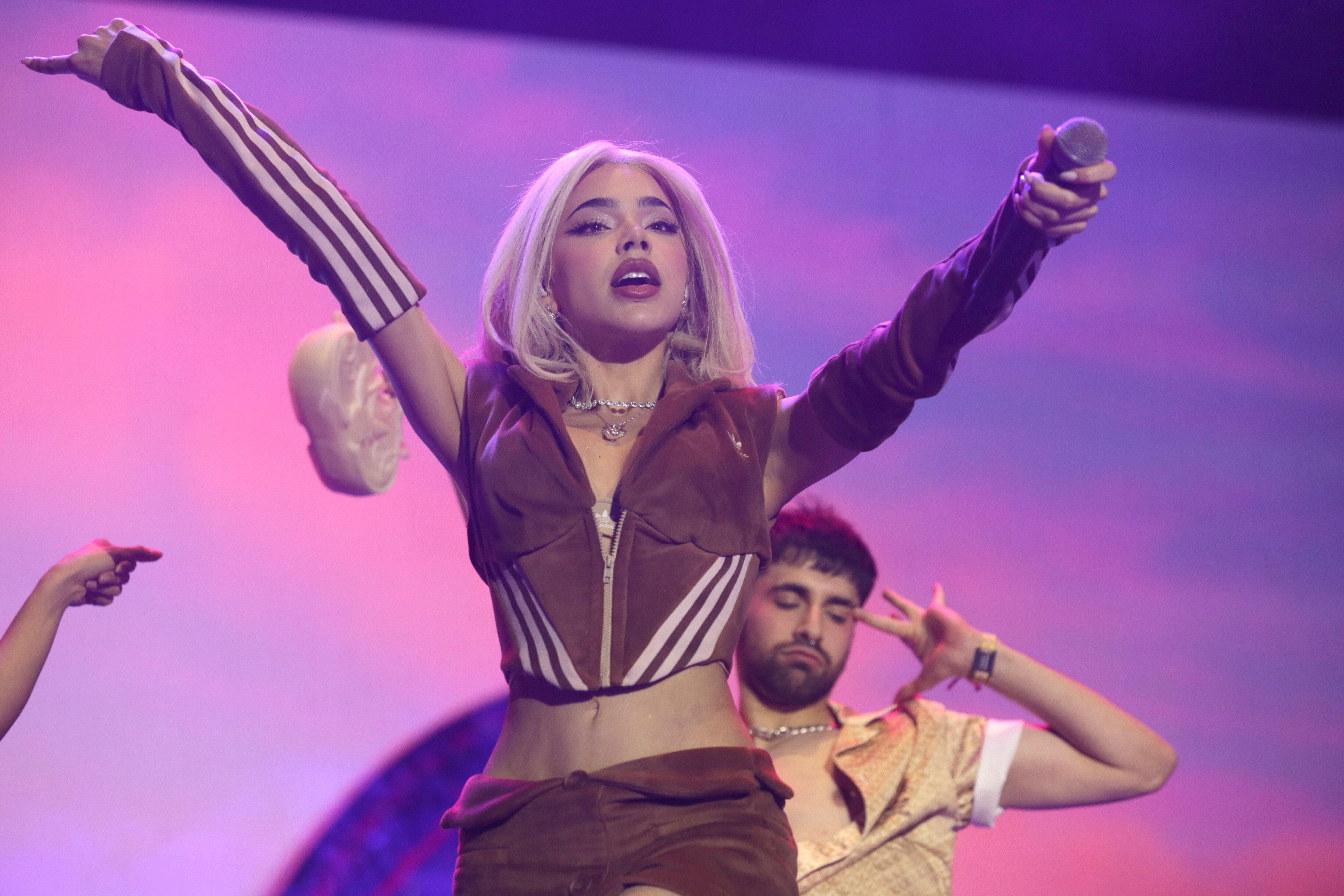
Photo: Ismael Rosas/Eyepix Group/LightRocket via Getty Images
interview
Kenia Os Unveils Her 'Pink Aura': How The Mexican Pop Star Let Her Feminine Energy Shine
On her new album, Kenia Os leaned into a variety of influences — from reggaeton Mexa to trap. The Latin GRAMMY nominee discusses collaborating with Álvaro Díaz, Villano Antillano and others, and letting her inner self shine.
Contemporary music is filled with artists who have transitioned from social media stardom to serious streams and even Music's Biggest Night. Kenia Os is proof of this trajectory: After building a massive following on YouTube, Instagram, and TikTok, she established as one of Mexico's top pop stars.
Kenia Os' ability to pivot successfully is also apparent in her music. Her 2022 debut album Cambios de Luna leaned into trap and reggaeton, while follow-up K23 fully embraced Latin pop with elements of EDM. Her "Universo K23" netted Kenia Os her first Latin GRAMMY nomination for Best Long Form Music Video.
On her latest album, Pink Aura, the 24-year-old seamlessly blends her worlds of Latin pop and urbano music. "I feel very comfortable making pop," Kenia Os tells GRAMMY.com. I also love Latin urban music and reggaeton, especially reggaeton Mexa that's blowing up…I wanted to make music in that style as well."
Pink Aura sees Kenia pushing pop into new territory — with the help of some friends. Puerto Rican singer Álvaro Díaz is featured on the futuristic, drum 'n' bass-infused "Bobo," while Puerto Rican trans rapper Villano Antillano appears on the euphoric "VIP." Argentina's La Joaqui helps Kenia Os meld reggaeton with cumbia on the freaky bop "Kitty." Reggaeton Mexa, or Mexican reggaeton, artists Yeri Mua and Ghetto Kids join Kenia for the sensual banger "Mamita Rica." Elsewhere, Os also links up with another influencer-turned-singer Bella Poarch for the fierce "F* OFF."
In an interview with GRAMMY.com, Kenia Os opens up about overcoming the stigma against artists coming from social media and the empowering meaning behind her Pink Aura album.
This interview has been edited for clarity.
How would you describe the experience of making the jump from YouTube and social media to becoming a pop star?
It's been incredible. It's been an adventure that I've been on for three or more years.
At the start, and even now, it's still been a bit difficult to get respect from the music industry. Since day one when I started making music, I've always taken this very seriously, making great music with good producers and my record label. I feel very confident about this new album that we've put out and I feel fulfilled as an artist.
As someone who did come from social media, what did your Latin GRAMMY nomination mean to you last year?
That day I cried all day. I couldn't believe it. I was very happy. It made me think about all the effort I’ve put in these past few years, and those times I was tired in the studio and thought about quitting. There were times I told myself, I don’t want to keep doing this because it’s very tiring to prove [to people] the artist that I am. I felt like everything was worth it. The hard work that me and my team have put into this over the years has been worth it.
An artist that has a similar career trajectory to you concerning social media is Bella Poarch. I can imagine that you probably bonded well with her while collaborating on the song "F* OFF."
Working with Bella was an incredible experience. Sometimes when you do collaborations, there's artists that are very much artists. You know what I mean? They love music, but they don't know a lot about navigating social media or what works in that space.
With Bella, what happened was that we could record TikTok videos and create content for social media. It was very natural and genuine. We shared ideas with each other like, "We'll make TikTok videos this way or you go here and I go there." [Laughs.] It was very genuine how we developed the content for marketing our collaboration. It was very beautiful. It's a very different experience to work with someone who also understands social media.
Tell me about the title of this new album — is there a story behind it?
My fans have asked me, "Kenia, why do you have everything pink? You have said before that you hated the color pink." It's not that I hated pink, but I had always said I didn't want pink in the background of my interviews, in my outfits, or anything.
The other day I was with my mom, looking at photos from when I was a little girl, and I saw everything in my room was pink. I was thinking about when I started fighting this color. I realized I started to hold back that feminine energy to be able to face the industry, to be the person in charge of my family, and keep up that livelihood. For me, this album was forgiving that feminine energy, embracing it, and healing myself, and above all, letting it shine.
You’re bridging the gap between Latin urban sounds and pure Latin pop on this album. Was that what you hoped to accomplish with that kind of fusion?
I feel very comfortable making pop. I love pop and it's the genre I enjoy the most. Every time I'm in the studio, I'm writing with my co-writers and producers, and we always make pop.
I also love Latin urban music and reggaeton, especially reggaeton Mexa that's blowing up. We have artists in that scene who are becoming very big. I feel very proud and I wanted to make music in that style as well because I like going to the clubs and I like to hear myself within that genre.
You collaborated with one of the top female artists in reggaeton Mexa, Yeri Mua, in "Mamita Rica." How would you describe the experience of working with her?
That was very beautiful. We went to the studio together and there was her whole team. There were her co-writers.
We were all surprised because you would think that she puts effects on her voice, but no, that's how she really sounds. As we say, she sounds very sexy and makes noises like meowing. [Laughs]. It was very fun! It felt very great to work with her.
All the reggaeton Mexa that's coming up in Mexico makes me so happy. I believe it was time with Mexico making more noise globally through música mexicana, reggaeton, and pop, and above all, with a sound that's very unique to us.
You’ve always supported the LGBTQIA+ community throughout your career. On this album, you collaborated with Villano Antillano, who is breaking down barriers for queer artists in Latin music. How did the song "VIP" with Antillano come together?
It's very beautiful to know that I have a lot of fans in the LGBTQIA+ community and that they identify with my music and feel supported by me. It's very important for me to be someone who can speak up for them; it's important for me to support them as well and spread their message through my music, what I say, and with what I do. I stand with them and I'll support them in any way that I can.
Villana is one of my favorite artists. I love everything that she does. When she jumped on this track and we heard it, I almost wanted to cry. The song was perfect for her. When I met her, it was incredible because we connected a lot as friends. We were laughing the whole time while making the music video. We have the same ways of saying things. I love her so much. I loved getting to know her and I got a great friendship out of this collaboration.
What do you want people to take away from the 'Pink Aura'?
I was telling my girlfriends the other day that this album is perfect for when you're getting ready [for a night out]. When you're in your room getting ready and putting on creams, perfume, and makeup. Then you have a little drink before going out to party.
This was made so people can enjoy it and connect with it in their room, in their cars, and in the clubs. It was made with a lot of love and the most pink side of myself and feminine energy that I hope resonates with girls and boys too. I want to heal that part of us that we sometimes hide or put to the side in order to face certain situations in life.
What do you want to accomplish next with your music?
I want to go global. I love my country and I love that my concerts in Mexico are always very full. The people of Mexico love me a lot, but I want to take my music to other countries. I want to be an artist that is internationally known.
I love pop and I see myself doing pop all my life, but I want to experiment with more genres. I would love to do another reggaeton song and then a corrido tumbado song with guitars. Above all, I want to hold the flag of my country high up wherever I go.
10 Women Artists Leading A Latin Pop Revolution: Kenia Os, Belinda & More
